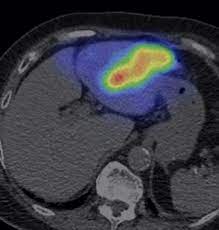In 1992, there were more than 20,000 real estate companies on Hainan Island, where the total number of people was only 6.558 million. In just three years, house prices have more than quadrupled. The final legacy is more than 600 “unfinished buildings”, 18,834 hectares of idle land, and 80 billion yuan of the backlog of funds. The bad debts of the four major state-owned commercial banks alone are as high as 30 billion yuan. Developers fled or went bankrupt one after another, and many banks’ non-performing loan ratios were as high as 60%. “End of the World, Cape, Unfinished Building” has become the three major landscapes of Hainan for a while. Hainan has to make long-term efforts to clean up unfinished buildings and non-performing loans.
Formation: Special Zone Experiment, South Tour Speech, Housing Reform
In 1988, on the occasion of the tenth anniversary of reform and opening up, China faced the problem of how to further deepen reform and expand opening up. At that time, four special economic zones, Shenzhen, Zhuhai, Xiamen, and Shantou had been established in China, these four cities belonged to the coastal urban economies, but they still needed to be explored for the vast rural areas. Therefore, the center needs an ideal test field. In 1988, Hainan’s rural population accounted for more than 80%, the level of industrial output was low, the per capita GDP was only 80% of the national average, and one-sixth of the population lived below the poverty line, basically in line with the central reform experiments. conditions, especially its unique geographical conditions.
On August 23, 1988, Hainan Island, known as “The End of the Sea”, broke away from Guangdong Province and established China’s 31st provincial-level administrative region. Haikou, a small seaside town with a population of less than 230,000 and a total area of less than 30 square kilometers, has become the capital of China’s largest special economic zone and an “ideal country” for gold prospects from all over the country.
In early 1992, Deng Xiaoping delivered a speech on his southern tour. Subsequently, the central government proposed to speed up the reform of the housing system. Therefore, the effect of Hainan’s establishment of a province and a special zone has been fully released.
Hainan Island’s real estate market is heating up suddenly.
Fanaticism: The Myth of Wealth, Drumming and Flowers
A lot of money was invested in real estate. During the peak period, there were more than 20,000 real estate companies on this island with a total population of only 6.558 million, with an average of one real estate company per 300 people.
At that time, the real estate speculators included the Central Army, including COSCO Group, COFCO, and the Nuclear Industry Corporation, as well as the miscellaneous army composed of well-known companies from all over the country. Most of the money for real estate speculation came from state-owned banks.
According to statistics from the Office of the Working Group on Disposal of Backlog of Real Estate in Hainan Province, the real estate investment in Hainan Province in 1989 was only 320 million yuan, while from 1990 to 1993, real estate investment increased by 143%, 123%, 225%, and 62% respectively over the previous year, the highest The annual investment amounted to 9.3 billion yuan, and the proportion of real estate investment in the total investment in fixed assets in each year was 22%, 38%, 66%, and 49%.
Of course, these companies are not all about building houses. In fact, most people are playing an ancient game of “beating the drums to pass the flowers.”
In 1992, the real estate investment in Hainan Province reached 8.7 billion yuan, accounting for half of the total investment in fixed assets. The real estate development area in Haikou alone reached 8 million square meters. In the same year, the economic growth rate of Haikou City reached an astonishing 83%, and Sanya, another hot city, also reached 73.6%. 40% of Hainan’s fiscal revenue comes from the real estate industry.
According to the “China Real Estate Market Yearbook (1996)” statistics, in 1988, the average price of commercial housing in Hainan was 1,350 yuan/square meter; in 1991, it was 1,400 yuan/square meter; The pinnacle of yuan/square meter. In just three years, it has grown more than 4 times.
Beihai City, Guangxi Province, which faces Hainan across the sea, is no less popular in real estate development. In 1992, more than 1,000 real estate companies emerged in this small city with only 100,000 people, and more than 500,000 speculators stationed in Beihai from all over the country. After taking turns, the land approved by the government of tens of thousands of yuan/mu can be sold to more than 1 million yuan/mu, and the land approved by the local government in one year reaches 80 square kilometers. So much so that Vice Premier Zhu Rongji, who came to inspect the next year, couldn’t help but remind the local government: “The North Sea is different from my Shanghai… (The construction of the North Sea) must be done according to one’s capabilities.”
In this unprecedented gamble, the government, banks, and developers have formed a tight iron triangle. During the bubble formation, led by the four major commercial banks, bank funds, state-owned enterprises, township enterprises, and private enterprises’ capital poured into Hainan through various channels, with a total of no less than 100 billion.
Almost all developers became debtors to banks. Astute developers have put the money earned from reselling the land or the off-plan into their pockets and mortgaged the houses still on the blueprints to the bank at a high price.
Since speculative demand has accounted for more than 70% of the market, some houses have been sold several times even while they are still in the design drawing stage.
Each player wants to pass the “flower” in his hand to the next person as soon as possible before the end of the game. It’s just that not everyone has good luck.
On June 23, 1993, the final whistle blew suddenly. Zhu Rongji, the then vice-premier of the State Council, delivered a speech announcing the termination of the listing of real estate companies and the full control of bank funds entering the real estate industry.
Crash and impact: macroeconomic regulation, monetary tightening, unfinished buildings, non-performing loans
On June 23, 1993, Zhu Rongji, then Vice Premier of the State Council, delivered a speech announcing the termination of the listing of real estate companies and the full control of bank funds entering the real estate industry. On the 24th, the State Council issued the “Opinions on the Current Economic Situation and Strengthening Macro-control”. The 16 strong control measures include strictly controlling the total scale of credit, increasing deposit and loan interest rates and national debt interest rates, recovering illegal borrowing funds within a time limit, reducing infrastructure investment, cleaning up all existing construction projects, etc.
Money was tightened in an all-around way, and the real estate boom in Hainan, which was advancing all the way, was suddenly drained from the bottom. The legacy of this regulation is that Hainan Province, which accounts for 0.6% of the country’s total population, has left behind 10% of the country’s backlog of commercial housing. There are more than 600 “unfinished buildings” in the province, covering more than 16 million square meters, 18,834 hectares of idle land, and a backlog of 80 billion yuan. The bad debts of the four major state-owned commercial banks alone are as high as 30 billion yuan. In the following years, Hainan’s economic growth rate fell off a cliff.
The Beihai, which is separated by a sea, has deposited funds as high as 20 billion yuan, and the unfinished building area exceeds that of Sanya. It is called China’s “Bubble Economy Museum”.
Developers fled or went bankrupt one after another, and banks suddenly became the largest developers. Many banks’ non-performing loan ratios were as high as 60%. When the bank began to dispose of non-performing assets, it was discovered that many mortgage assets projects had actually dug a big hole, and the real estate mortgaged at sky-high prices was just a “castle in the air”. To make matters worse, many real estate projects still owe a large number of construction funds, and some have even mortgaged them several times.
According to statistics, CCB alone has disposed of 267 non-performing real estate projects, with a reported construction area of 7.6 million square meters, of which the existing housing area is nearly 80,000 square meters, accounting for 20% of Hainan’s real estate stock, and the cash recovery ratio is less than 20%.
Some established brokerages, such as Huaxia Securities and Southern Securities, also suffered heavy losses due to their direct investment in real estate in Hainan. To this end, the China Securities Regulatory Commission had to stop the direct investment of securities companies in April 2001.
In August 1995, the Hainan Provincial Government decided to establish Hainan DevelopmentBanks to solve the problem of financial difficulties caused by many trust and investment companies in the province due to a large number of real estate investments. But in just two years and 10 months, there was a run on Hainan Development Bank. On June 21, 1998, the central bank had to announce the closure of Haixing, which was also the first provincial commercial bank in New China to be closed due to the payment crisis.
Starting in 1999, it took Hainan Province a full seven years to dispose of the backlog of real estate. As of October 2006, the province had disposed of 23,353.87 hectares of idle construction land, accounting for 98.17% of the total idle land, and disposed of 4.4482 million square meters of the backlog of commercial housing, accounting for 97.6% of the total backlog.
“End of the World, Cape, Unfinished Building” has become the three major landscapes of Hainan for a while.




